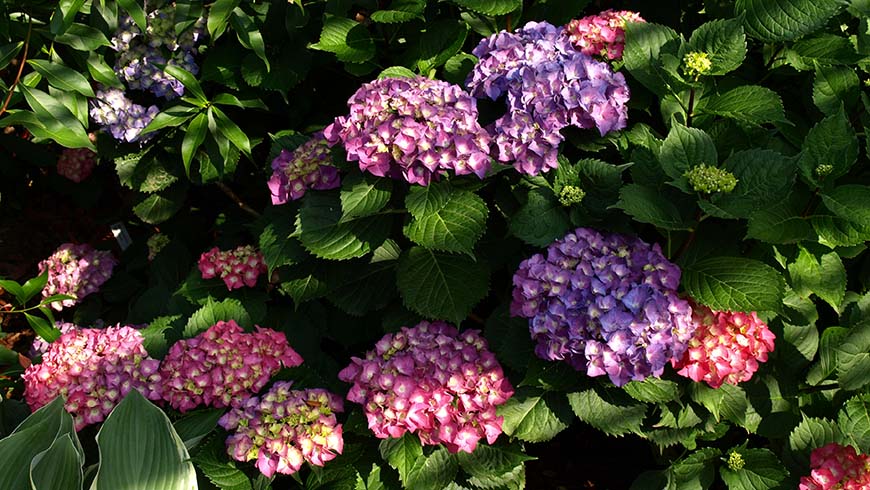Hydrangeas
go.ncsu.edu/readext?720435
en Español / em Português
El inglés es el idioma de control de esta página. En la medida en que haya algún conflicto entre la traducción al inglés y la traducción, el inglés prevalece.
Al hacer clic en el enlace de traducción se activa un servicio de traducción gratuito para convertir la página al español. Al igual que con cualquier traducción por Internet, la conversión no es sensible al contexto y puede que no traduzca el texto en su significado original. NC State Extension no garantiza la exactitud del texto traducido. Por favor, tenga en cuenta que algunas aplicaciones y/o servicios pueden no funcionar como se espera cuando se traducen.
Português
Inglês é o idioma de controle desta página. Na medida que haja algum conflito entre o texto original em Inglês e a tradução, o Inglês prevalece.
Ao clicar no link de tradução, um serviço gratuito de tradução será ativado para converter a página para o Português. Como em qualquer tradução pela internet, a conversão não é sensivel ao contexto e pode não ocorrer a tradução para o significado orginal. O serviço de Extensão da Carolina do Norte (NC State Extension) não garante a exatidão do texto traduzido. Por favor, observe que algumas funções ou serviços podem não funcionar como esperado após a tradução.
English
English is the controlling language of this page. To the extent there is any conflict between the English text and the translation, English controls.
Clicking on the translation link activates a free translation service to convert the page to Spanish. As with any Internet translation, the conversion is not context-sensitive and may not translate the text to its original meaning. NC State Extension does not guarantee the accuracy of the translated text. Please note that some applications and/or services may not function as expected when translated.
Collapse ▲Hydrangeas are a favorite of many gardeners and I am no exception. I grow the bigleaf or mophead hydrangea because of the fond memories I have of them in both of my grandmother’s gardens. These hydrangeas produce the big round flower heads that are pink or blue or somewhere in-between. They are the only hydrangea that you can change the color of the flower based on the soil pH. Add lime to the soil for pink flowers and sulfur from blue flowers. The bigleaf hydrangea blooms on old wood or last year’s growth so prune after flowering.
In my garden now, the panicle hydrangea is coming into its own and will continue into fall. This plant produces white flowers that go through a color change as they mature and age to pink and mauve colors. These plants will tolerate full sun or morning sun and afternoon shade and bloom on new growth, so any pruning can be done in late winter.
Another hydrangea that I have in my garden is the oakleaf hydrangea. This is a native shrub that not only produces beautiful flowers but provides year-round interest in the garden with beautiful fall color in the leaves and exfoliating bark. Like the bigleaf, this hydrangea blooms on old wood, so prune after flowering.
If you don’t have hydrangeas in your landscape, I encourage you to consider adding them to provide color and year-round interest to your garden.
Have you attended the Union County Heritage Festival at the Agriculture Center in past years? If so, I want to let you know that in 2020 due to the COVID-19 pandemic we will be going virtual! The Wild Turkey 5K Walk & Run will be virtual and there will be multiple activities and videos posted that you can do on September 19, 2020. For more information, visit and bookmark the Heritage Festival website (Union County Heritage Festival).





